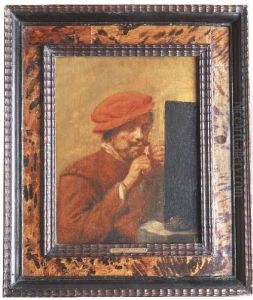Joos Van Craesbeck Paintings
Joos van Craesbeeck was a Flemish painter born in Neerlinter, a small town in the Duchy of Brabant, which is now part of modern-day Belgium, around 1605 or 1606. His exact date of death is somewhat uncertain, but records suggest he died in 1660 or 1661. Craesbeeck’s life and career are notable for his remarkable journey from bakery owner to master painter, a transformation that underscores his versatility and determination.
Van Craesbeeck's initial foray into the world of art was not through an apprenticeship in a painter's studio, as was customary, but rather through his work as a baker, a profession he inherited from his father. His life took a significant turn when he married the daughter of the painter Jan Mertens. This connection led him to apprentice under Adriaen Brouwer, a prominent Flemish genre painter known for his lively and often rowdy tavern scenes. Under Brouwer’s guidance, Craesbeeck developed a keen eye for detail and a distinctive style that emphasized the humorous and grotesque aspects of life, much in the vein of his mentor.
By the 1630s, van Craesbeeck had established himself in Antwerp, a hub of artistic activity in the 17th century. He became a master in the Antwerp Guild of Saint Luke in 1633/34, which marked his official recognition as a painter. His works from this period show a strong influence from Brouwer, featuring scenes of peasants, soldiers, and taverns that highlight the vices and follies of humanity with a mix of satire and sympathy. However, Craesbeeck gradually developed his own style, moving towards more varied subject matter that included religious themes and portraits.
Joos van Craesbeeck’s contribution to Flemish art lies in his ability to blend the influence of his contemporaries with his own unique perspective, creating works that are at once familiar and distinctly his own. His paintings are characterized by their vivid realism, attention to texture and light, and an often dark, earthy palette. Despite his late start and unconventional path to becoming an artist, Craesbeeck’s work had a significant impact on the genre of peasant and tavern scenes in Flemish art, influencing later artists and contributing to the rich tapestry of Baroque painting.
Sadly, details about the later years of Craesbeeck’s life and his activities are sparse. After his time in Antwerp, he moved to Brussels, where he continued to work until his death. Today, Joos van Craesbeeck’s paintings can be found in major museums around the world, serving as a testament to his skill and unique place in the history of Flemish art.
